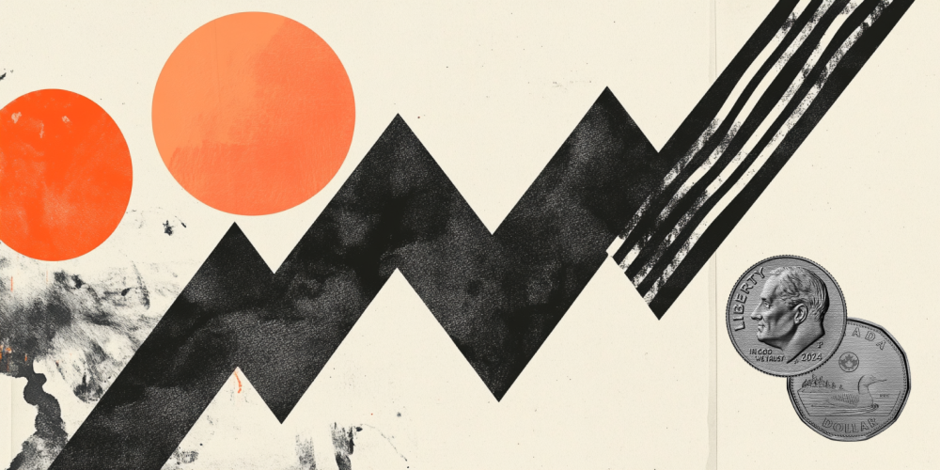USD/CAD Price Forecast: Refreshes fortnight high around 1.4350
- USD/CAD posts a fresh 15-day high 1.4350 amid a strong recovery in the US Dollar.
- Investors expect Trump’s tax agenda to be pro-growth and inflationary for the economy.
- BoC dovish bets continue to weigh on the Canadian Dollar.

The USD/CAD pair extends its winning spree for the fourth trading day on Wednesday. The Loonie pair posts a fresh fortnight high near 1.4360 as the US Dollar (USD) gains further on expectations that United States (US) President Donald Trump’s $4.5 trillion tax cut bill, which passed by the House of Representatives on Tuesday, would boost inflation and growth in the economy.
The US Dollar Index (DXY), which gauges the Greenback’s value against six major currencies, jumps to near 106.60 after recovering from the 11-week low of 106.10 earlier in the day.
Higher inflation and upbeat economic growth would compel Federal Reserve (Fed) officials to maintain a restrictive monetary policy stance for a longer period.
Meanwhile, the Canadian Dollar (CAD) underperforms as investors expect the Bank of Canada (BoC) to further reduce interest rates. The BoC has already reduced its key borrowing rates to nearly 3% from the peak of 5% seen in May 2024.
Canadian inflation continues to remain below the BoC’s target of 2% due to sluggish economic growth.
USD/CAD rallied to near 1.4350 after a strong recovery from the February 14 low of 1.4150. The Loonie pair climbed above the 50-period Exponential Moving Average (EMA), which is around 1.4250, suggesting that the near-term trend has turned bullish.
The 14-period Relative Strength Index (RSI) exhibits a range shift move from the 20.00-60.00 block to the 40.00-80.00 territory, which indicates a bullish reversal.
Going forward, a further upside move above the February 9 high of 1.4380 would open the door toward the round-level hurdle of 1.4400 and the psychological resistance of 1.4500.
On the contrary, if the pair breaks below its February 14 low of 1.4151, it will fall to its December 9 low of 1.4094, followed by its December 6 low of 1.4020.
USD/CAD four-hour chart
Canadian Dollar FAQs
The key factors driving the Canadian Dollar (CAD) are the level of interest rates set by the Bank of Canada (BoC), the price of Oil, Canada’s largest export, the health of its economy, inflation and the Trade Balance, which is the difference between the value of Canada’s exports versus its imports. Other factors include market sentiment – whether investors are taking on more risky assets (risk-on) or seeking safe-havens (risk-off) – with risk-on being CAD-positive. As its largest trading partner, the health of the US economy is also a key factor influencing the Canadian Dollar.
The Bank of Canada (BoC) has a significant influence on the Canadian Dollar by setting the level of interest rates that banks can lend to one another. This influences the level of interest rates for everyone. The main goal of the BoC is to maintain inflation at 1-3% by adjusting interest rates up or down. Relatively higher interest rates tend to be positive for the CAD. The Bank of Canada can also use quantitative easing and tightening to influence credit conditions, with the former CAD-negative and the latter CAD-positive.
The price of Oil is a key factor impacting the value of the Canadian Dollar. Petroleum is Canada’s biggest export, so Oil price tends to have an immediate impact on the CAD value. Generally, if Oil price rises CAD also goes up, as aggregate demand for the currency increases. The opposite is the case if the price of Oil falls. Higher Oil prices also tend to result in a greater likelihood of a positive Trade Balance, which is also supportive of the CAD.
While inflation had always traditionally been thought of as a negative factor for a currency since it lowers the value of money, the opposite has actually been the case in modern times with the relaxation of cross-border capital controls. Higher inflation tends to lead central banks to put up interest rates which attracts more capital inflows from global investors seeking a lucrative place to keep their money. This increases demand for the local currency, which in Canada’s case is the Canadian Dollar.
Macroeconomic data releases gauge the health of the economy and can have an impact on the Canadian Dollar. Indicators such as GDP, Manufacturing and Services PMIs, employment, and consumer sentiment surveys can all influence the direction of the CAD. A strong economy is good for the Canadian Dollar. Not only does it attract more foreign investment but it may encourage the Bank of Canada to put up interest rates, leading to a stronger currency. If economic data is weak, however, the CAD is likely to fall.
Author

Sagar Dua
FXStreet
Sagar Dua is associated with the financial markets from his college days. Along with pursuing post-graduation in Commerce in 2014, he started his markets training with chart analysis.


















